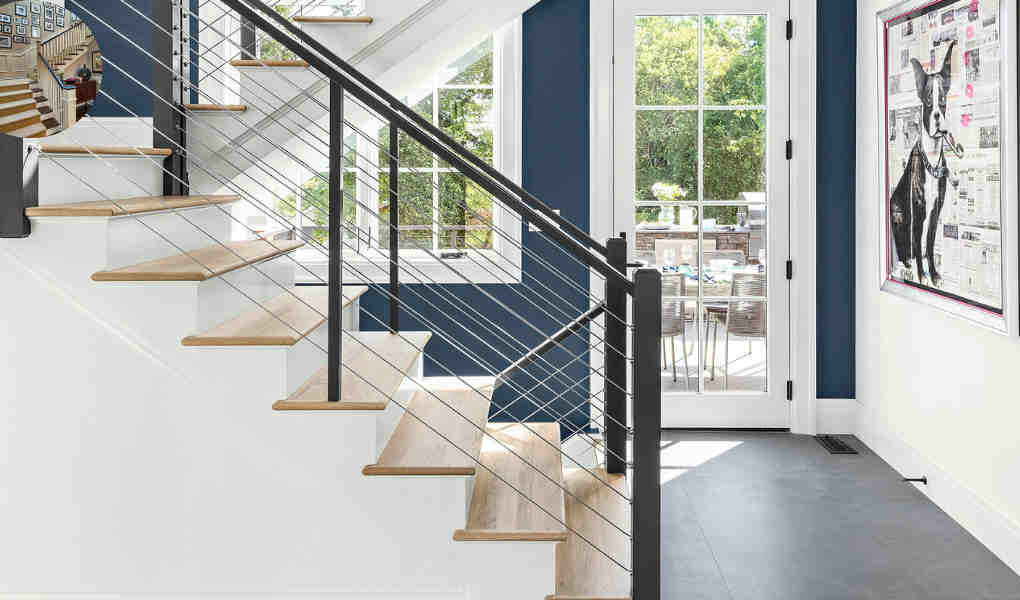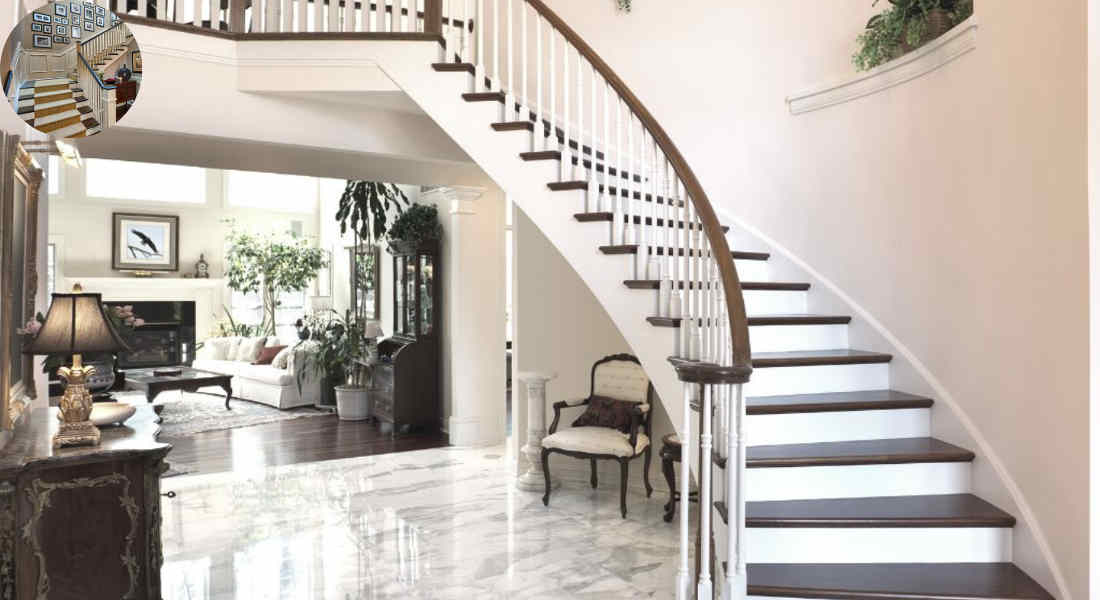Stairs are essential to home design, connecting different levels and ensuring accessibility between floors. While they might seem like just another architectural feature, their design, size, and safety significantly impact the functionality and comfort of a home.
Whether planning a renovation, building a new house, or just curious about the details of your home’s design, this guide will walk you through everything you need to know about stairs. Let’s dive in!
Understanding the Basics of Staircases in Homes
Before discussing how many stairs are typically found in a house, it’s essential to understand some basic terms and principles of staircase design. These foundational details will help you better grasp how stair count is determined.
What Is a Flight of Stairs?
A flight of stairs refers to a continuous set of steps without landings or breaks. In most homes, a staircase has one or two flights, depending on the height of the floors and the house’s layout. A typical flight of stairs in a residential home usually consists of 8 to 16 steps.
Common Staircase Terminology
Here are some key terms you should know before diving further into staircase design:
- Steps: The individual units that make up a staircase.
- Treads: The flat horizontal surface of the step where you place your foot.
- Risers: The vertical portion between each tread.
- Landings: Flat platforms that break up flights of stairs, typically used when the staircase changes direction or exceeds a certain height.
- Ceiling Height: The vertical distance from the floor of one level to the ceiling above directly affects the staircase’s height.
Ceiling Heights and Their Impact on Stair Count
The average ceiling height in modern homes is between 8 and 10 feet. Since stairs need to cover the vertical distance between floors, this height directly influences the required steps. For example:
- 8-foot ceilings typically require 13 to 15 steps.
- 9-foot ceilings need around 15 to 17 steps.
- 10-foot ceilings require 17 to 19 steps.
This variation is because the riser height (the distance between each step) is usually between 7 and 8 inches, per building codes.
Building Codes and Stair Safety
Residential staircases must adhere to local building codes to ensure safety and comfort. Some standard guidelines include:
- Maximum riser height: 7.75 inches.
- Minimum tread depth: 10 inches.
- Maximum number of steps per flight: Typically, 16 to 18 steps before requiring a landing.
Designers also consider the “Rule of 18” and the “Rule of 27”, which balance the riser height and tread depth for safety and comfort. For example, the riser height and tread depth sum should ideally equal 18 inches.
Typical Number of Stairs in a Normal House
Now that we’ve covered the basics,, let’s answer the big question: How many stairs are there there in a typical house? While there’s no single answer, averages are based on standard house designs and construction practices.
You may also read (stairs are in a normal house).
Average Number of Stairs in a Two-Story House
In most two-story homes, the staircase consists of 13 to 16 steps in a single flight. This number can vary depending on the ceiling height:
- 8-foot ceilings: 13-15 steps.
- 9-foot ceilings: 15-17 steps.
- 10-foot ceilings: 17-19 steps.
The staircase may require additional steps if the house has higher ceilings or unusual architectural features (e.g., vaulted ceilings).
Why Most Staircases Have Odd Numbers of Steps
Interestingly, many staircases have an odd number of steps. This is because it allows you to start and finish on opposite feet, providing a natural rhythm when walking up or down stairs. It’s a small detail, but it’s often considered in staircase design for comfort.
Stair Counts in Different Types of Homes
Let’s take a quick look at how staircases vary across different home styles:
Home StyleTypical Stair Count
Modern two-story home 13-16 steps
Victorian home 18-22 steps (higher ceilings)
Split-level home 6-8 steps per flight
Ranch-style home 1-3 steps (if single-story)
Older homes, like Victorian or colonial-style houses, often have more steps due to higher ceilings, while modern homes with standard 8- or 9-foot ceilings require fewer.
Factors Influencing the Number of Stairs in a House
Several factors contribute to the number of stairs in a home. While ceiling height is a primary determinant, other considerations also come into play.
Ceiling Height and Floor-to-Floor Distance
As discussed earlier, the vertical distance between floors significantly impacts stair count. Builders must calculate the total height and divide it by the riser height to determine the number of steps.
Building Codes and Safety Regulations
Staircases must comply with local building codes that regulate:
- The maximum number of steps in a flight (usually 16 to 18).
- There is a need for handrails and landings after a certain height.
- Minimum width and tread size for safety.
Design Considerations
The design of the staircase can also affect its length and step count. For example:
- Steep staircases require fewer steps but may be less comfortable.
- Shallow staircases with deeper treads provide more walking space but increase the number of steps.
External vs. Internal Stairs
External stairs, such as those leading to a porch or deck, often have fewer steps than interior staircases. These are usually included in the overall stair count for the house, especially if they’re connected to entryways.
How to Calculate the Number of Stairs Needed for Your Home
If you plan to build or renovate your home, calculating the number of stairs is essential. Here’s how you can do it:
- Measure the Floor-to-Floor Height: Use a tape measure to determine the vertical distance between two floors.
- Determine the Riser Height: Divide the total height by the maximum allowable riser height (usually 7 to 8 inches). For example, if the floor-to-floor height is 108 inches, and your riser height is 7 inches, you’ll need 15 steps.
- Include Landings: Landings may be required if the staircase changes direction or exceeds 16 steps. Adjust your calculation to account for these breaks.
- Consult Building Codes: Ensure your staircase complies with local safety regulations.
You may also read (apartment waste management best practices for eco conscious living).
Common Questions About Stairs in Homes
Why Do Many Houses Have 13 Stairs?
The number 13 is common because it fits the standard ceiling heights and riser-to-tread ratios. It’s also a practical choice for balancing convenience and safety.
How Many Stairs Are in a Typical Flight?
A typical flight of stairs usually has 12 to 16 steps in residential homes, depending on the floor height.
What Is the Maximum Number of Stairs Allowed in a Flight?
Most building codes recommend a maximum of 16 to 18 steps per flight before requiring a landing.
You may also read (faze rug address house).






